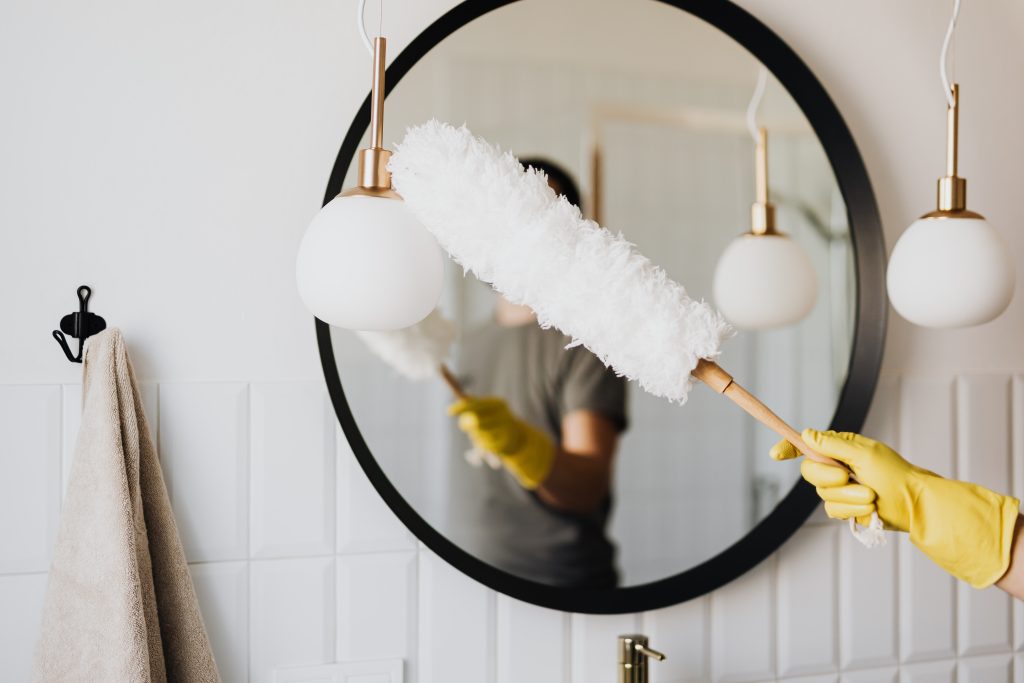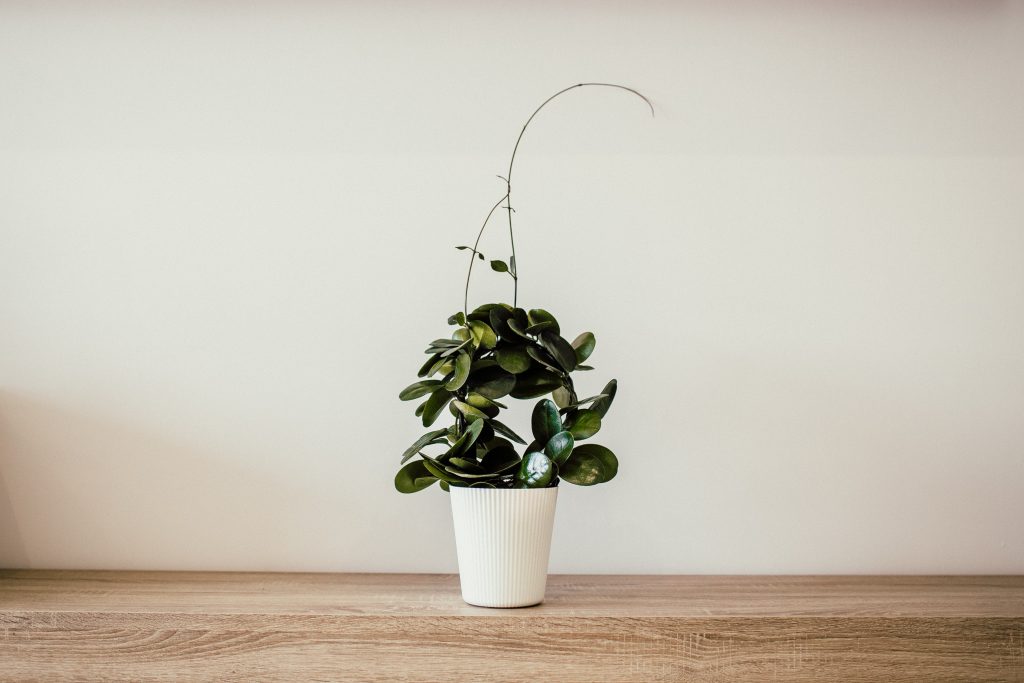8 Ways to Improve Indoor Air Quality at Home
Indoor air quality is often taken for granted. It might surprise you to learn that the air inside your home can actually be more polluted than the air outside. How is that possible?
Poor ventilation, uncomfortably hot or cold weather, and routine home maintenance can lead to increased levels of allergens and particulates that negatively affect indoor air quality (IAQ). These factors can also cause us to neglect the habits that contribute to good IAQ, such as cleaning, opening windows, and replacing filters.
Learn about indoor air quality and why it’s important, plus 8 tips to help you improve it below.
Overview of Indoor Air Quality
Indoor air quality, or IAQ, is a measure of the level of pollutants and allergens that hang in the air in your home (or business). These pollutants can come from many sources, indoors and outdoors, including the following:
- Pet allergens
- Tobacco smoke
- Cooking fumes
- Paint
- Building materials
- Houseplants
- Aerosol sprays
- Pesticides
- Glue and adhesives
- Cleaners and disinfectants
Below, you’ll find tips to combat these sources of indoor air pollution and help keep the air in your home cleaner.
Why Indoor Air Quality is Important
People spend about 90 percent of their time indoors, according to the EPA.
We spend such a significant portion of our lives indoors, yet the air may be full of allergens and pollutants from pets, furniture, paint, cleaners, and outside pollutants that make it inside.
Maintaining good indoor air quality is an important part of a healthy lifestyle for ourselves and our families.
Below are 8 proven ways to improve the air quality in your home and keep it fresh.
How to Improve Indoor Air Quality: 8 Tips
1. Invest in an Air Purifier for Your Home
Using an air purifier is one of the best ways to improve the indoor air quality of your home. Start by placing air purifiers in your most-used rooms and run them regularly to trap allergens and filter out pollutants
Air purifiers that use True HEPA filters are proven to trap up to 99.97% of pollutants as small as 0.3 microns in diameter. You can use an air purifier that features scheduling, remote control, and other convenient extras to help keep your air clean.
Some air purifiers even offer an aromatherapy feature so you can use essential oils to circulate fresh air with pleasant scents.
There are several types of air purifiers that you can use to clean the air in your house.
Types of Indoor Air Purifiers
- Air purifiers with HEPA filtration: These air purifiers contain HEPA filters to catch pollutants. They blow air through a HEPA filter, which traps allergens and particles, and returns cleaner air back into the room.
- Ionizing air cleaner: An ionizing air cleaner charges allergen particles as they pass through the device, causing them to stick to furniture, walls, and other surfaces. You can then vacuum them up, or use a duster to trap and discard them more easily.
- Electrostatic air purifier: An electrostatic air purifier releases charged ions that attach to allergen particles as they cycle through. Once they’re attached, the particles stick to oppositely charged plates inside the air purifier.
- UV air purifier: The UV technology that some air purifiers feature uses ultraviolet light to kill bacteria and viruses that pass through the device.
2. Routinely Change Your Filters
To keep your air purifiers working efficiently, it’s important to regularly change your filters.
And it doesn’t stop there. Your heating or central air system may also have filters that you should change regularly. Replacing HVAC filters as often as recommended on the packaging helps ensure that they work at maximum efficiency to filter particles and pollutants from the air.
For people with allergies or other sensitivities, the EPA recommends getting your home’s air ducts cleaned, as well. Otherwise, pet dander, dust, and other allergens can collect in air ducts over time and recirculate throughout your home.
3. Improve Ventilation
Indoor air can be relatively stagnant for days or weeks, with closed windows offering little ventilation. Additionally, many heating and cooling systems don’t bring fresh air into your house. Under these conditions, pollutants can build up.
By opening windows and doors during nice weather, you allow fresh air to circulate through your house. In addition, you can open the vent control on some air conditioning units to increase the flow of fresh air.
4. Keep Your Home Clean

Cleaning the surfaces, furniture, and other objects in your home is an effective way to improve indoor air quality, too.
Decorations and furniture collect dust, appliances may grow mold, and carpets can hold onto a surprising amount of dirt. A humid bathroom may become a breeding ground for mold and mildew, as well.
To prevent these allergens from entering the air, clean and dust regularly.
Use your vacuum cleaner and pick up all of the dust and minute particles that could reduce the IAQ in your home. Dust furniture, shelves, and decorations often – that’s where many allergens and dust particles build up.
Regular cleaning is a good habit, and by doing so you’ll squash numerous sources of indoor air pollution.
VOCs and Other Air Pollutants
Some construction and furniture-making materials emit pollutants. For example, particleboard may emit formaldehyde. Meanwhile, paint, wood preservatives, and similar products may emit volatile organic compounds (VOCs).
Preowned furniture may contain fewer VOCs as it will have had time to air out before you bring it into your home. That said, some items continue to emit VOCs as they’re used.
5. Use Cooking Vents in the Kitchen
Think about how good your whole house smells after you cook dinner or bake treats. That smell should also tell you how easily gases and particles from cooking travel throughout your house, floating in the air and landing on surfaces, only to be sent flying back into the air later.
While you’re cooking, use the vent over the stove to suck oil droplets, food particles, and smoke out of your kitchen and blow it outside.
6. Control Humidity in Your Home
Humid conditions in your home can cause mold and mildew – a type of fungus – to grow. These common indoor allergens can irritate people with allergies and asthma.
To help prevent the growth of mold and mildew, keep humidity levels under control. The ideal indoor level is between 30 and 50 percent, according to the EPA.
Using Humidifiers in the Winter
When the air in your home is too dry, you might experience dry skin or chapped lips. Especially during the cooler months, it may be helpful to use a humidifier to add moisture to dry air.
Make sure to clean your humidifier often to prevent any mold and mildew buildup inside the machine. If it features a filter or wick, replace it regularly, as recommended on the packaging. And keep an eye on humidity levels to avoid too much moisture buildup.
Doing so will help you keep your home’s indoor air quality as high as possible while making the air more comfortable.
7. Clean Your Carpets and Rugs
Chances are you’ve vacuumed a carpet or two in your lifetime, and if you’ve done that, you know how much dust, pet dander, and dirt carpets can collect in no time at all.
Rugs, runners, and wall-to-wall carpeting are hidden sources of air pollution waiting right under your feet. As you and others walk on carpets, it releases the particles back into the air.
To solve this problem, vacuum your carpets often. You can take small rugs outside and beat the dust out of them with a shoe or carpet duster (it’s a good idea to wear a dust mask while you do this).
If you have pets that shed significant amounts, or you or a family member have severe allergies, consider changing from carpets to hardwood floors in certain rooms.
8. Keep Your Plants Outdoors

Although some plants are said to have minor air-cleaning qualities, research has found that a reasonable number of houseplants do not have a noticeable effect on IAQ.
Meanwhile, houseplants can collect dust and dander. Overwatered plants can also promote the growth of mold spores and mildew, which can add to the indoor air pollution in your home.
If you’re sensitive to allergens, consider keeping most of your plants outside, as long as they’re hardy enough for the climate.
Air Purifiers Improve Indoor Air Quality
While all of the above 8 tips will help you reduce indoor air pollution and enjoy cleaner air inside your home, remember: air purifiers are specifically designed to remove allergens and airborne particulate matter. And they run in the background, constantly filtering the air so you can worry less about IAQ and breathe easy.
Sources
Volatile Organic Compounds’ Impact on Indoor Air Quality, EPA: https://www.epa.gov/indoor-air-quality-iaq/volatile-organic-compounds-impact-indoor-air-quality
What Are the Trends in Indoor Air Quality and Their Effects on Human Health?, EPA: https://www.epa.gov/report-environment/indoor-air-quality
Should You Have the Air Ducts in Your Home Cleaned?, EPA: https://www.epa.gov/indoor-air-quality-iaq/should-you-have-air-ducts-your-home-cleaned
Care for Your Air: A Guide to Indoor Air Quality, EPA: https://www.epa.gov/indoor-air-quality-iaq/care-your-air-guide-indoor-air-quality
Potted Plants Do Not Improve Indoor Air Quality: A Review and Analysis of Reported VOC Removal Efficiencies, Journal of Exposure Science & Environmental Epidemiology: https://www.nature.com/articles/s41370-019-0175-9

